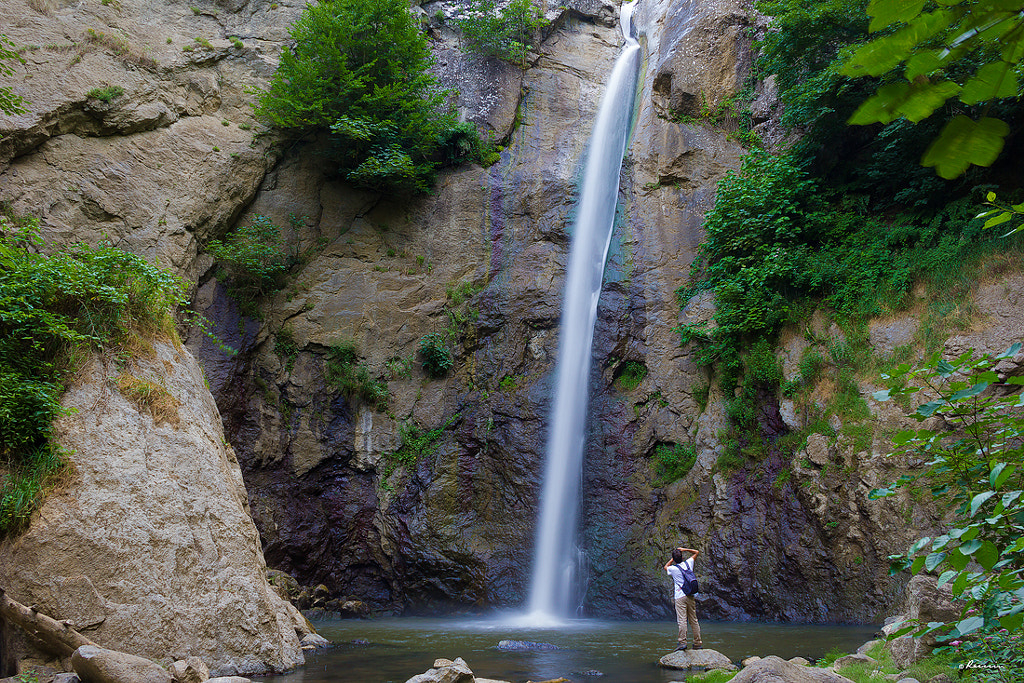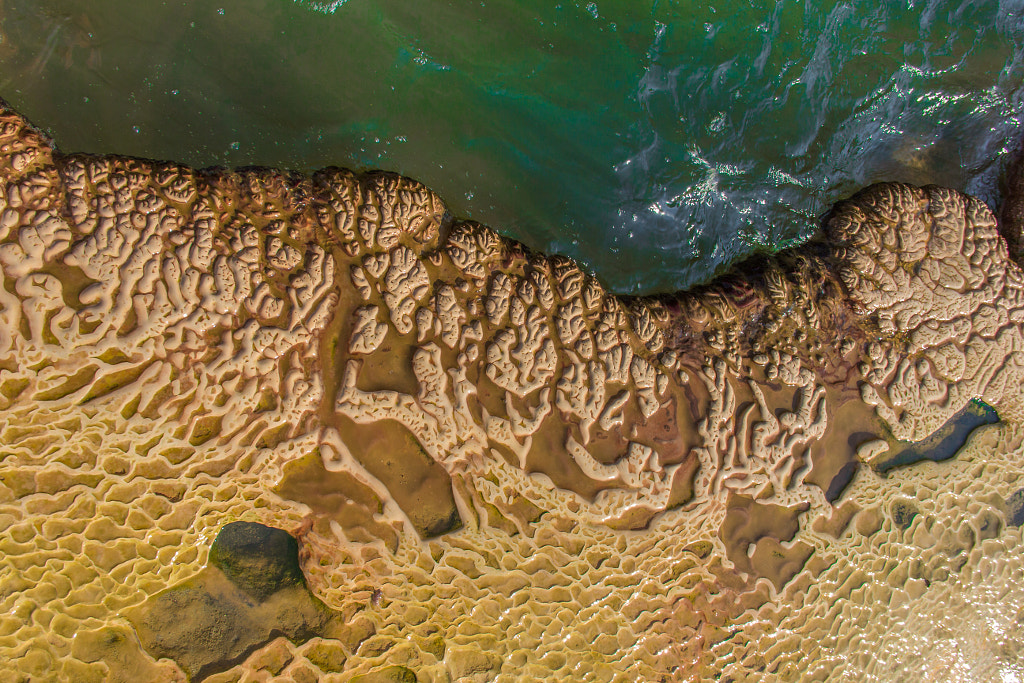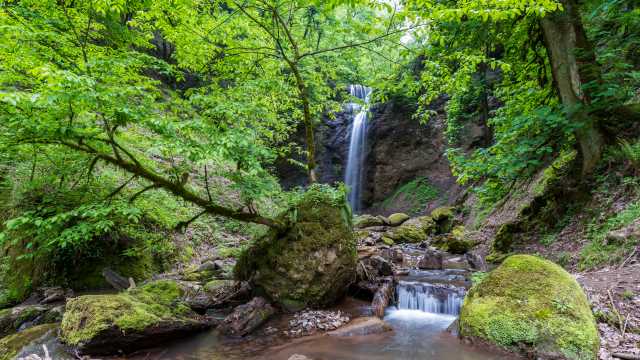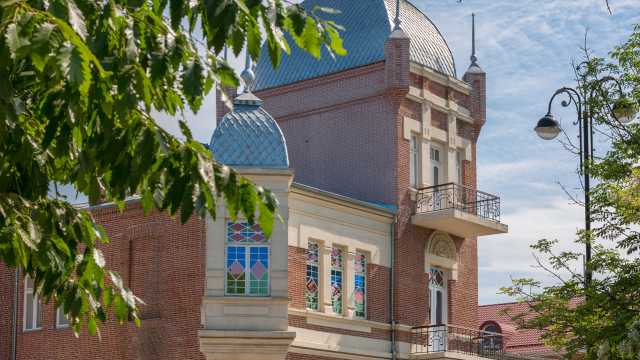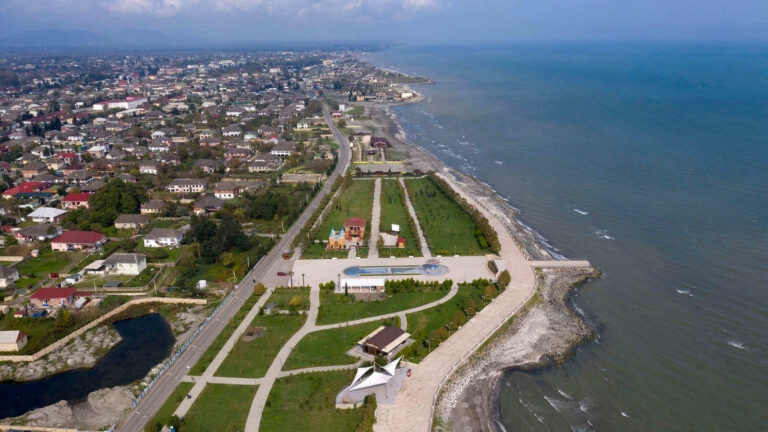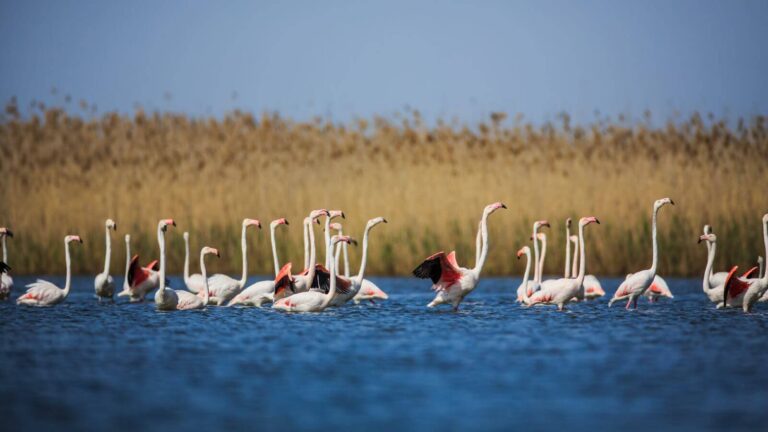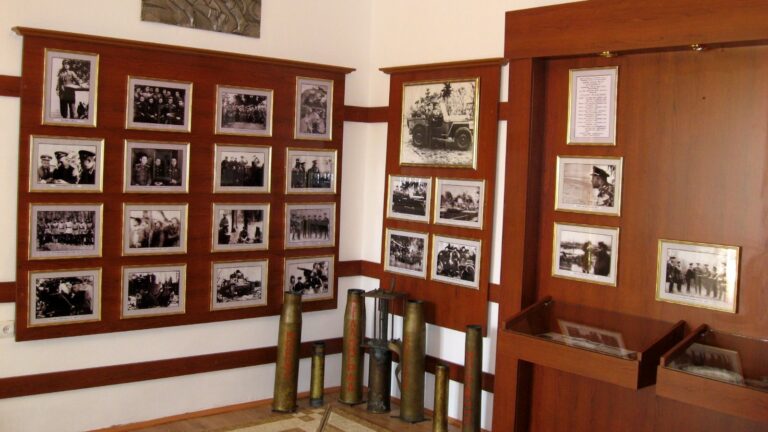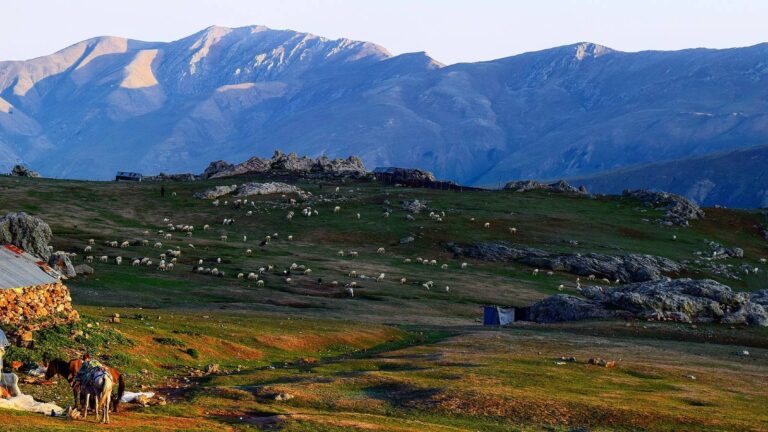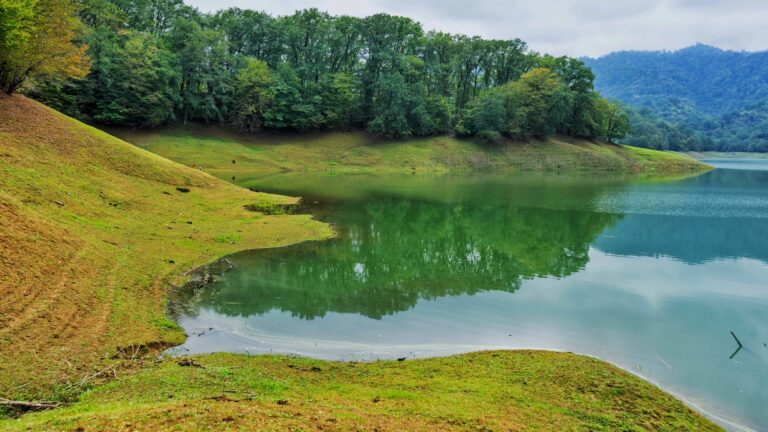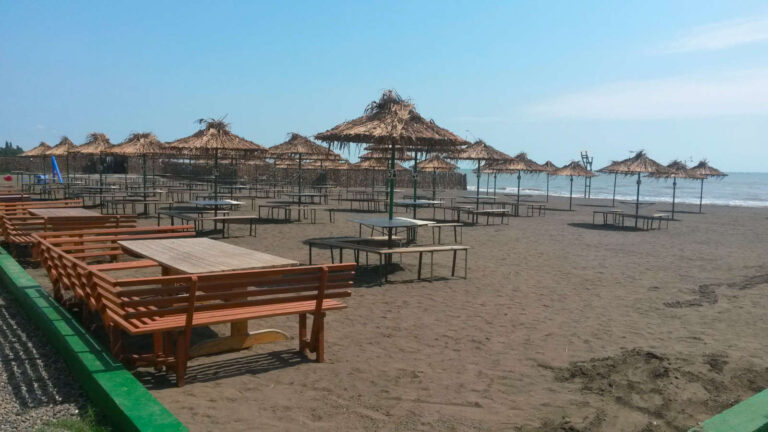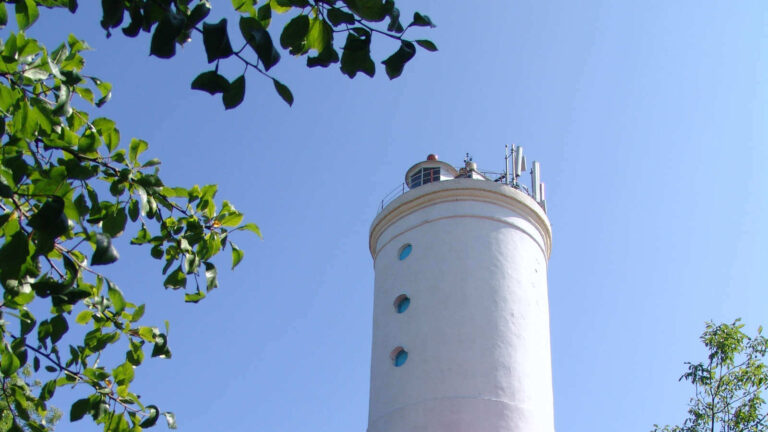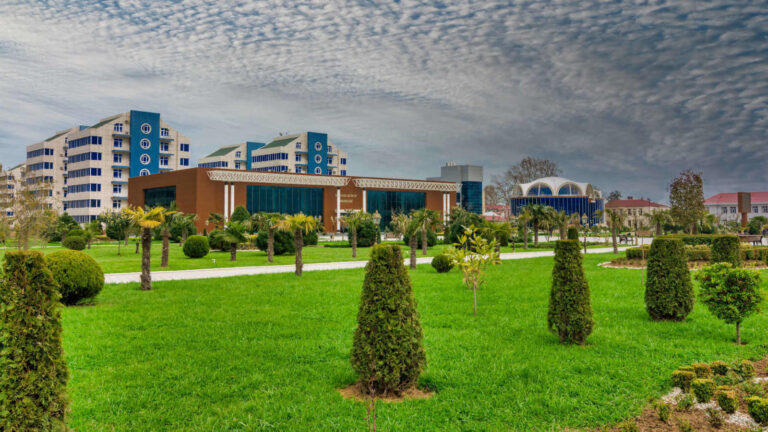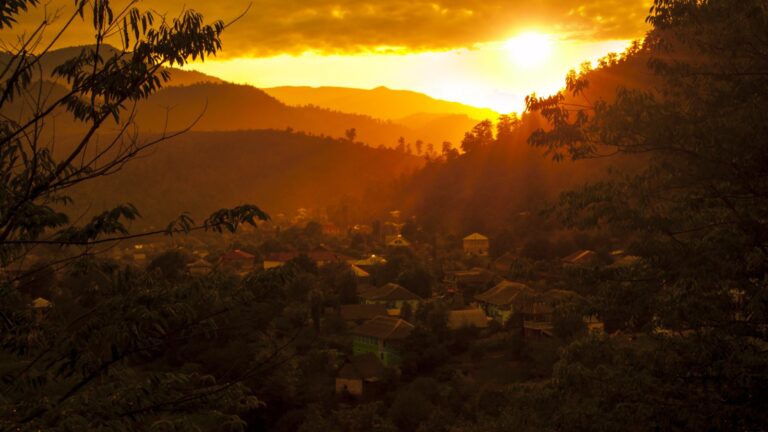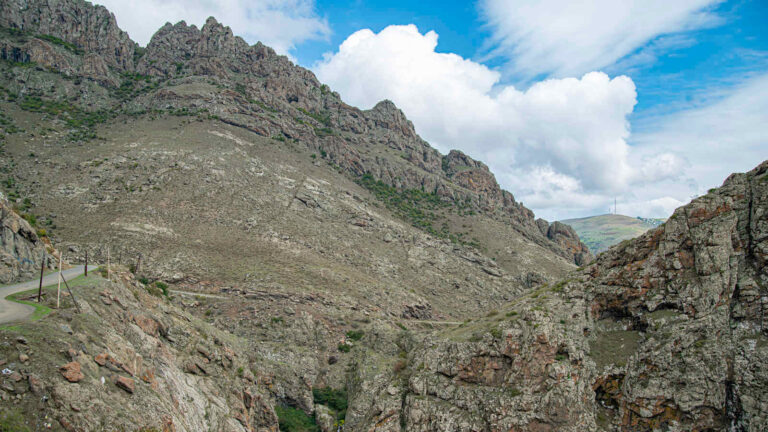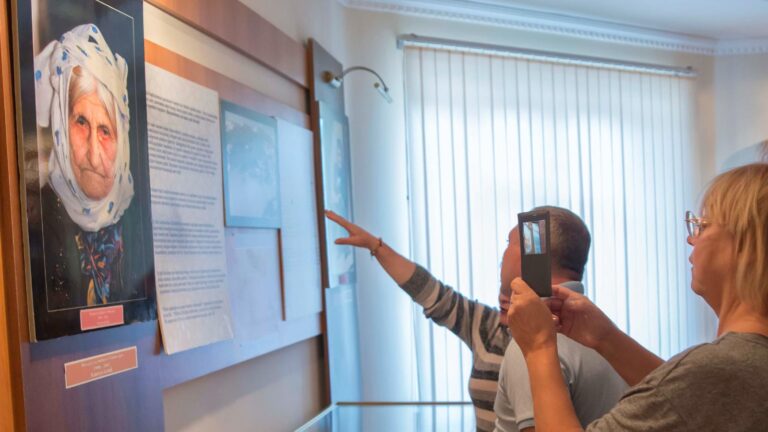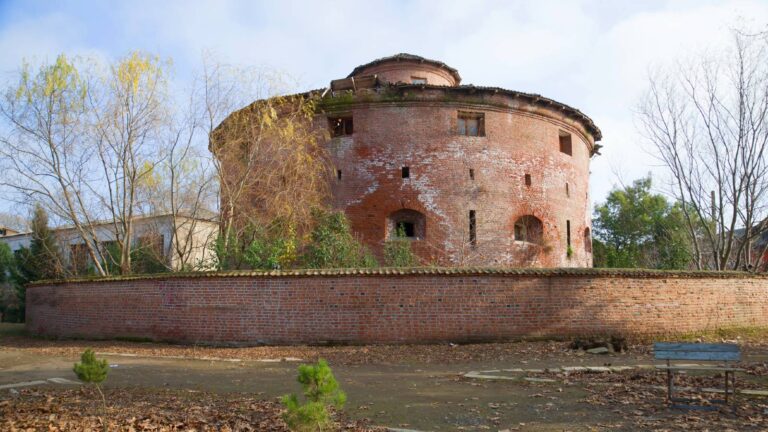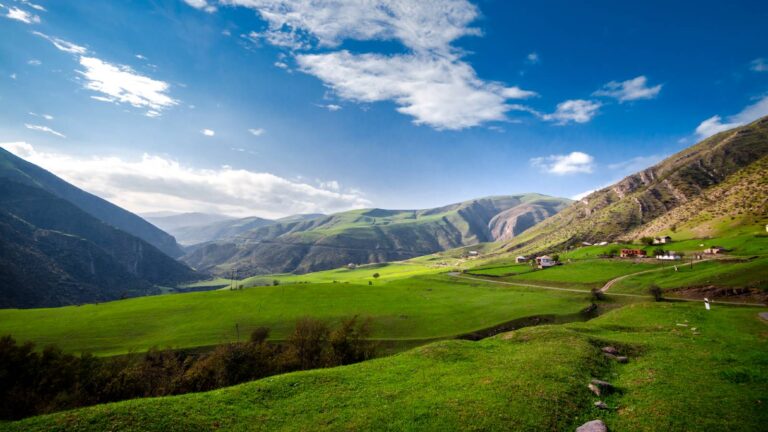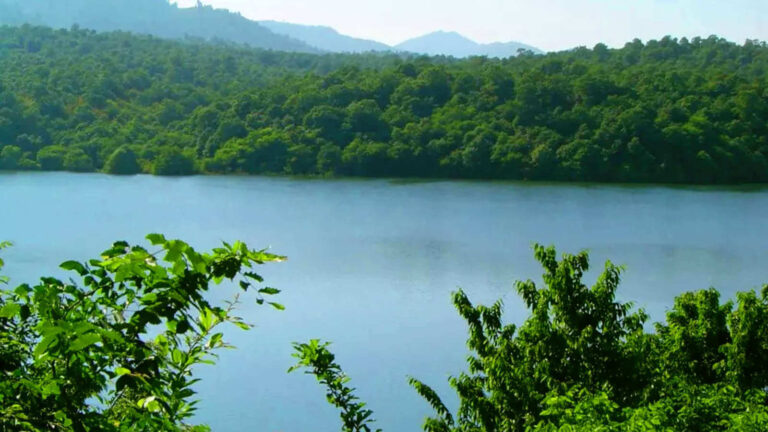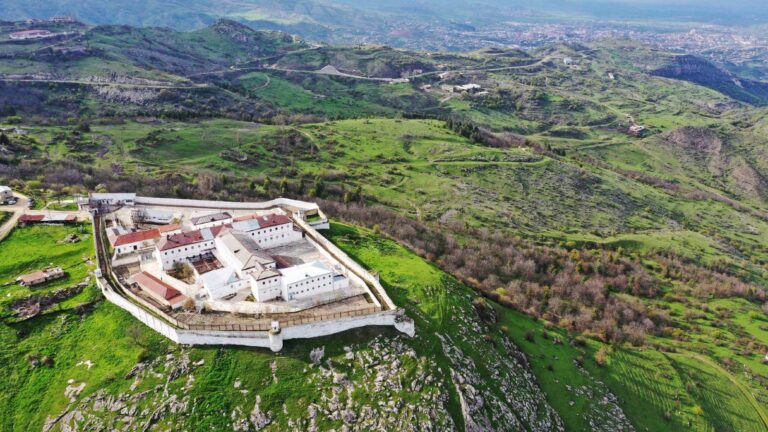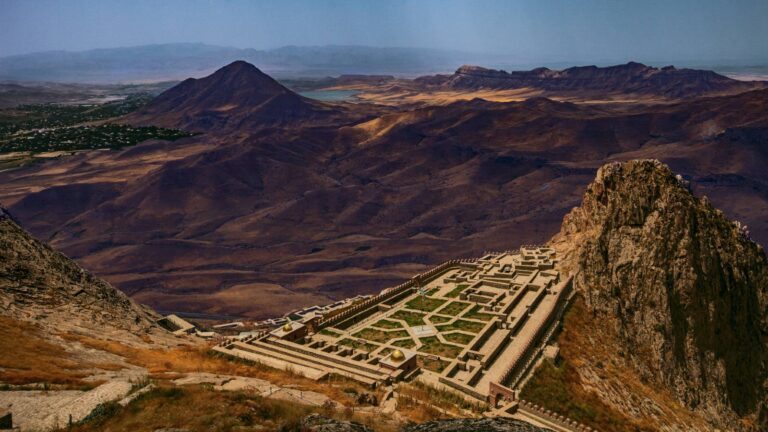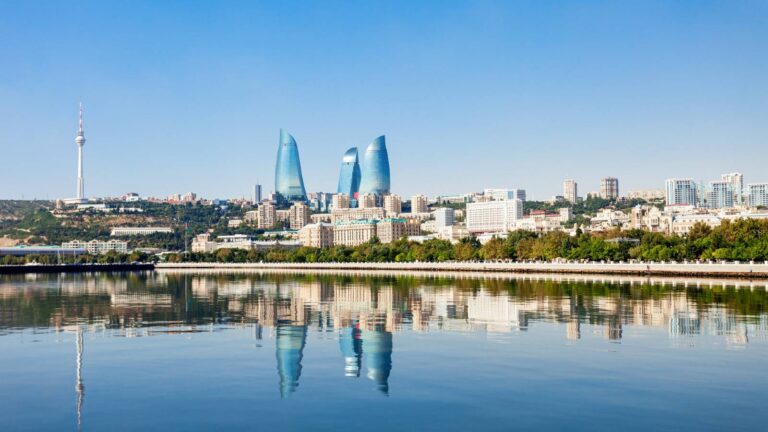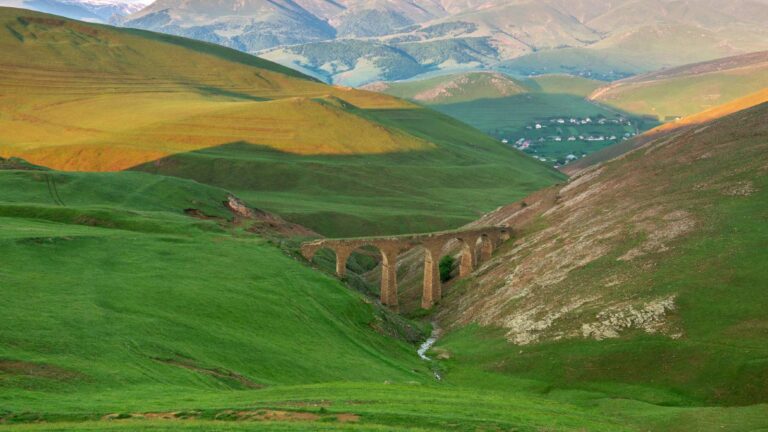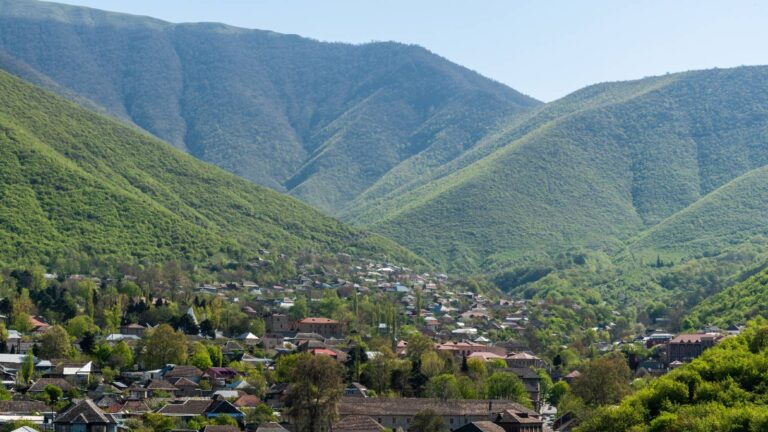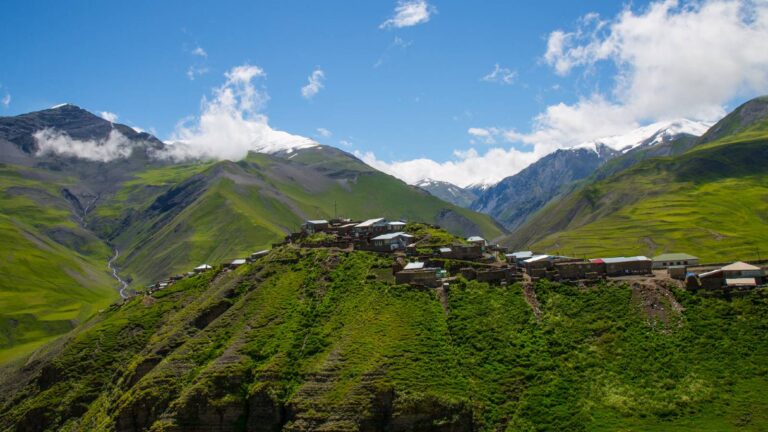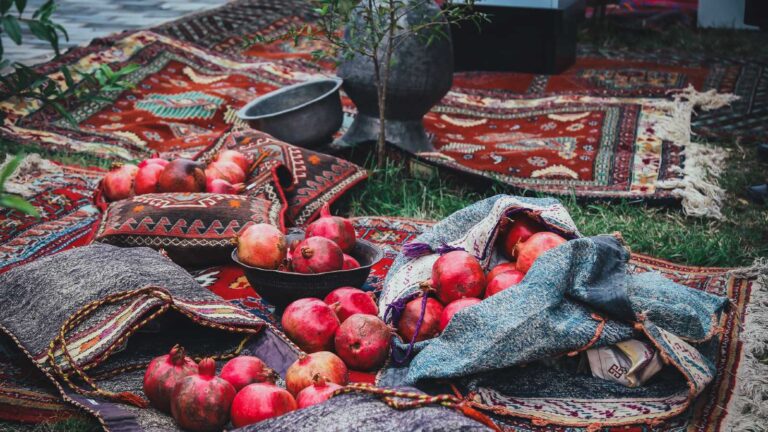By Plane
There is an international airport in Lankaran and railway service operates between Baku and Astara.
By Car and Bus
Thanks to a smooth and direct highway, you can reach Lankaran and Astara in just a few hours from Baku. Buses from Baku’s International Bus Station go to each town and city. Taxis and shared cars are readily available.
The diverse nature and scenery of this region is one of the highlights: the lagoons of the Gizil Aghaj National Park are a mecca for birdwatchers, while the Hirkan National Park is a vast area of lush broad-leaved forest dotted with relict species.
Scenic country roads lead deep into the Talish Mountains, where rustic villages seem to exist in another time. Visit Sim village in Astara for an incredible ecotourism experience; the short hike to Sim Waterfall will take you up through the rustic houses, vegetation and massive rocks that make this village special.
If you travel here in summer you can enjoy some relaxation on therapeutic black-sand beaches in Lankaran and Astara, where there’s a variety of accommodation options. High up in the mountains is the Lerik region, home to idyllic landscapes of rolling meadows, rocky canyons and expressive trees. This area is rich in medicinal plants and renowned for its fresh produce.
The highlight of the Masalli region is Istisu, a thermal hot spring on the Vilashchay river where locals have been bathing since time immemorial to heal all manner of ailments. Meanwhile Astara, Azerbaijan’s southernmost region bordering Iran, has a lovely seaside boulevard and in the village of Archivan is an intriguing site called Yanar Bulag, or Burning Spring, whose medicinal water is high in methane and combusts when lit with a match or lighter.
Lankaran city is the cultural capital of the south-east and boasts several historic landmarks and museums, most notably the Regional Museum of History and Ethnography, located in the historic former residence of a descendent of the Talish Khan, who ruled the area in 1747-1828.
Also worth seeing are the House Museum of Hazi Aslanov, the Soviet-Azerbaijani general who is the city’s favourite son, and the 18th-century Round Tower – Zindan, once a prison that Joseph Stalin is rumoured to have escaped from during his early revolutionary days.
Situated about 50km west of Lankaran, head to the mountaintop town of Lerik for its completely unique Museum of Long Livers, celebrating the high-mountain region’s curious reputation for producing extremely long-lived people thanks to its pristine air, water and nature.
Another attraction in the Lerik region is the Buzeyir Caves, which were inhabited as far back as Paleolithic times.
Crafts
The Masalli region is renowned for a variety of crafts, such as reed weaving, the art of making elaborately painted wooden chests and pottery, which visitors can learn about at the ABAD centre in Masalli town.
Events and Festivals
The Tea, Rice and Citrus Festival takes place each autumn in Lankaran city (interrupted by the pandemic). Normally it features up to one hundred stalls and pavilions showing off a wide range of local goodies amid a vibrant atmosphere conjured by colourful national costumes, folk music and dancing.
Gastronomy
Generally speaking, the cuisine of this region, influenced by the Talish Mountains and Caspian Sea, enjoys a special reputation in Azerbaijan with its popular dishes like lavangi, chicken or fish stuffed with a walnut and plum paste, and pumpkin plov (pilaf).
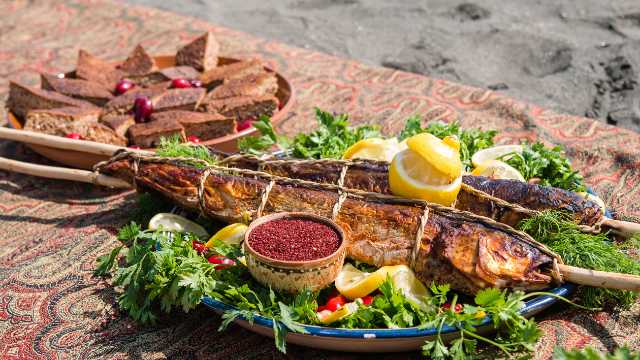
The majority of the region’s inhabitants are Talish, whose culture is very close to Azerbaijanis’ but they have their own language and the mountain villages in particular have a special look and feel.
This southern region has a humid subtropical climate and rainfall is high due to the proximity of the Caspian Sea and Talish Mountains. The Hirkan Forest, which spreads across Lankaran, Astara and over the Iranian border and is protected by the Hirkan National Park is famous for its abundance of relic tree species. The Gizil Aghaj National Park protects a vast and outstandingly biodiverse area of wetlands. The extremely rare Caucasian leopard roams high forested areas of the Talish Mountains. Rare bird species such as the Caspian tit can also be found.
The region is famous as well for its thermal and mineral waters. The humid subtropical climate, fertile soils and high rainfall are ideal for growing tea, rice and citrus fruits. In general, expect hot, humid summers and mild winters by the coast and cooler temperatures in the mountains.
The region is a major producer of citrus fruits, tea and rice; tourists can visit local plantations to learn about these industries. Livestock farming is widespread, and fishing, viticulture and increasingly tourism also play an important role in the local economy.

